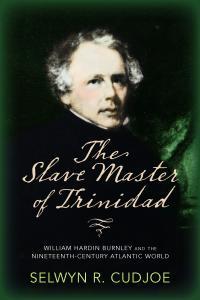Whiteness and critical race theory
By Dr Selwyn R. Cudjoe
October 25, 2021
An article, "Energising conservative voters, one school board election at a time", appeared in The New York Times last Thursday. It was subtitled "Republicans hope that concerns about critical race theory can help them in the midterm election".
This issue has torn apart one of Wisconsin's suburbs. Stephanie Saul, author of that article, sought to demonstrate how "Republicans are using fears of critical race theory to drive school board recalls and energise conservatives, hoping to lay groundwork for the 2022 midterm elections" (October 21).
Although critical race theory (CRT) is not taught at US primary or secondary schools, parents in predominantly white school districts are particularly afraid of the teaching of what they consider a pernicious doctrine to their children. Condoleezza Rice, former secretary of state and a distinguished professor at Stanford University, noted on Wednesday's episode of The View: "I would like black kids to be completely empowered to know they are beautiful in their blackness, but in order to do that, it don't have to make white kids feel bad for being white."
CRT has not been confined to school boards. It has also invaded US politics. In Virginia, Terrie McAuliffe (Democrat) is fighting against Glenn Youngkin (Republican) for his political life in next month's gubernatorial election. What was supposed to be an easy victory for McAuliffe is now a dead heat because, as McAuliffe says, Youngkin is using CRT as "a racist dog whistle" to energise his followers. During his political rallies "the loudest cheers come when Youngkin promises to ban critical race theory in Virginia on his first day in office" (Washington Post, October 13.)
What then, is CRT and why is it driving white folks crazy?
CRT is not a recent entity against which so many misguided state governors and boards of education have raised their voices. It is an ongoing mode of intellectual enquiry and practice that was started by our academic forefathers and fore-mothers such as WEB Du Bois, Ida B Wells-Barnett, Anna Julia Cooper and Carter G Woodson, all of whom placed the notion of race-consciousness at the heart of their pedagogical and ideological projects.
CRT, in its present form, emerged in the 1980s from the dissatisfaction with how law professors at Harvard University treated the question of race as it involved their interpretation of the law. The editors of Critical Race Theory (1997) noted: "With its explicit embrace of race-consciousness, critical race theory aims to re-examine the terms by which race and racism have been negotiated in American consciousness, and to recover and to revitalise the radical tradition of race-consciousness among African-American and other peoples of colour—a tradition that was discarded when integration, assimilation and the ideal of colour-blindness became the official norms of racial enlightenment."
White scholars were also present at the founding of CRT as an intellectual enterprise. Derrick Bell, "The man behind critical race theory", as The New Yorker described him last month, noted: "Those critical race theorists who are white are usually cognisant of and committed to the overthrow of their own racial privilege."
In other words, the proponents of CRT were saying that one could not analyse the challenges that faced the US if one did not consider the role race played in the making of America and how it shapes society today. Such an analysis must also consider how whiteness and white privilege affect the distribution of goods and services in the society.
CRT, however, did not gather full speed until September 4, 2020, when the Trump administration started its war against "race-based ideologies" and the Office of Management and Budget director Russell Vought, at President Trump's behest, released a memo instructing "federal agencies to identify any critical race theory and white privilege training within their department training plans".
Things got worse on September 22, 2020, when President Trump released his "Executive Order on Combating Race and Stereotyping" that was designed "to promote unity in the Federal workforce, and to combat offensive and anti-American race and sex stereotyping and scapegoating". He argued that CRT is "an ideology... rooted in the pernicious and false belief that America is an irredeemably racist and sexist country; that some people simply on account of their race or sex, are oppressors; and that racial and sexual identities are more important than our common status as human beings and Americans".
Following Trump's lead, many states adopted the language of his Executive Order to outlaw the teaching of critical race theory or even to mention such language in school. Like Trump, they believe that CRT teaches white children to hate themselves.
One organisation, Moms for Liberty, has 135 chapters in 35 states with 56,000 members and supporters. In January 2021, it sent letters to school board members across the country, alleging that "teaching white children about systematic racism and the legacy of white supremacy makes their children feel guilty about their white skins and even suicidal".
James Hohmann ended his article, "Critical race Theory is a potent issue in Virginia's governor's race", with the words: "Critical race theory is an issue tailor-made to help Republicans win this, well, critical race."
CRT does more than this. It prevents America from relapsing into its centuries-old habit of race-blindness that has prevented it from achieving the goals of its Declaration of Independence that all men and women are created equal. With all due respect to Rice, teaching white kids about the central role race plays in their society allows them to have a better sense of how their country works.
CRT does not teach white people to hate themselves. It allows them to liberate themselves from baseless fears they have harboured over centuries due to their mis-education in America.
Prof Cudjoe's e-mail address is scudjoe@wellesley.edu. He can be reached @ProfessorCudjoe.
Share your views here...

The Slave Master of Trinidad by Dr. Selwyn R. Cudjoe
|

